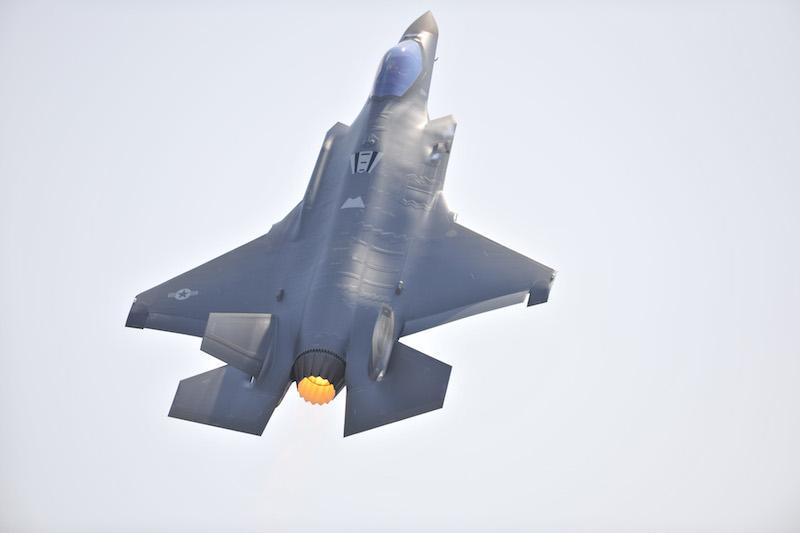
The Pratt & Whitney engine for the F-35 is being upgraded for the first time since the original design was frozen in 2004.
An engine upgrade for the Lockheed Martin F-35 is set to advance beyond the preliminary design stage by the end of March, even as General Electric continues to campaign for a competition to replace the fighter’s Pratt & Whitney F135.
Pratt plans to complete preliminary design work on the Engine Core Upgrade (ECU) for the F135 by the end of December and the preliminary design review before February, a company spokesman said on Nov. 28.
Meanwhile, new acquisitions documents released by the Joint Program Office show the next phase of development will be awarded by the end of March. The contract for technology maturation and risk reduction for critical ECU components should be signed by the end of the second quarter of fiscal 2024, which ends in March. Full engineering and manufacturing development will follow, with the program expected to be complete by the end of December 2031, according to the documents.
Pratt will receive a series of sole-source contracts to continue ECU development over the next eight years, the documents show. Meanwhile, the first ECU version of the F135 should become operational in 2029.
“Pratt & Whitney has 600 employees fully dedicated to this effort, and we’re on track to deliver F-35 operators the power needed to enable Block 4 capabilities and beyond starting in 2029,” a company spokesman said.
The ECU program is moving forward despite objections by GE and some lawmakers who favor replacing the F135 rather than upgrading it. The re-engining proposal would lead to a competition between GE and Pratt, with each offering production versions of the A100 and A101 turbofans, respectively. Both engines feature adaptive systems, such as a variable bypass system enabled by opening or closing a third stream of airflow within the engine case.
U.S. Air Force Secretary Frank Kendall championed the engine replacement option for the F-35A after he was confirmed in August 2021. But the Defense Department decided instead last year to upgrade the existing engine for the F-35, arguing that the lower costs outweighed the increased performance offered by the A100 and A101.
Both adaptive turbofan options promised to improve thrust, fuel efficiency and power and thermal management capacity compared to the ECU version of the F135. The new acquisition documents omit horizontal thrust and fuel efficiency improvements as goals for the ECU program.
Instead, the goal of the ECU program is to maintain commonality between engines that power F-35s sold to U.S. and foreign operators of all three variants. The ECU should also increase the longevity of the F135, reduce maintenance costs, double power and thermal management capacity and increase horsepower extraction from the engine to power the F-35’s Block 4 electronics, according to the new acquisition document.
Finally, the ECU program is expected to improve the vertical lift capabilities of the F-35B, the documents say. Such an upgrade would deliver more thrust to the lift fan and roll posts of the short takeoff and vertical landing version of the F-35.


Comments